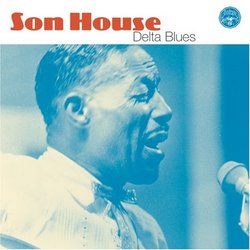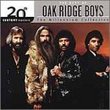| All Artists: Son House Title: Delta Blues Members Wishing: 3 Total Copies: 0 Label: Shout Factory Release Date: 7/15/2003 Genres: Country, Blues, Pop Styles: Classic Country, Delta Blues, Traditional Blues, Acoustic Blues, Slide Guitar Number of Discs: 1 SwapaCD Credits: 1 UPC: 826663017021 |
Search - Son House :: Delta Blues
 | Son House Delta Blues Genres: Country, Blues, Pop
|
Larger Image |
CD DetailsSimilarly Requested CDs
|
CD ReviewsSome of the best field recordings I have ever heard! Brian Kerecz | PA, USA | 04/13/2005 (5 out of 5 stars) "These were field recordings made by Alan Lomax in 1941 and 1942 for the Library of Congress of Son House. The setting was extemporaneous and you can tell this is true in two of the songs(Walking Blues, Shetland Pony Blues) when you hear a locomotive in the background, as they were recorded in a local general store (Klack's) in Cormorant, MS. Son House was one of the earliest blues players, and some might argue (as I would), that he was also the most influential, playing with Charlie Patton and Robert Johnson before Robert Johnson went off on his own to make his own famous recordings. These recordings, outside of the Paramount sides recorded in 1930, are the only true "original" recordings we have of Son House in his prime......his 60's recordings are basically these 20 years later. And as a sidenote, it should be noted that Son House stopped playing after some of his contemporaries started dying (Charlie Patton, Robert Johnson), and he thought he would be next! So he put his guitar down after these 1942 recordings and did not play again until he was rediscovered in the 60's living in New York state. 5 Stars for the songs; and fewer stars for the background information provided in the booklet. I was hoping for more information about Son House and his life around the time of these recordings but unfortunately little background information is provided. Regardless, this is an outstanding collection of some of the earliest (and most raw) of the Blues ever recorded. Highly recommended." Listen and Learn Tony Thomas | SUNNY ISLES BEACH, FL USA | 03/03/2004 (5 out of 5 stars) "Even if he hadn't influenced anyone, even if historically he was a 19 year old kid from Shirley, Long Island, even if this recording at just been waxed last night, this is good, essential blues listening, you won't want to stop listening, you wont stop seeing the scenes of the blues that the songs make, you won't stop swaying at the power and swing of his guitar playing and singing. On here, my song is Preachin the Blues. I know you will have yours.Son House taught Robert Johnson the slide blues. Son House taught Muddy Waters. When Son House started performing at Blues festivals again in the mid 1960s, some of Muddy's younger band members would start to go off for a smoke or whatever when the old man came on stage. Muddy wouldn't let them. Muddy Waters would tell all his band members to be quiet and pay attention when the man played because even compared with Muddy, this was the real deal. Rediscovered in Rochester, New York, relearning to play the guitar, (how this country abuses the masters that come from its people, particularly its Black people), put back on the stage by the folk revival's blues section, House made recordings that reproduced his old masterpies, with a wrier sense of meaning than before.People outside of the blues life focus on the guitar playing or the rhythm of the singing, but where the power comes from is the feeling and the words that are put together, the life and the meaning of the blues. Son House in his youth and his old age, on this and his other sides, always gave it.So Like Muddy Waters, I would like you to know that
Son House is the real deal. Listen and learn" |

 Track Listings (15) - Disc #1
Track Listings (15) - Disc #1








